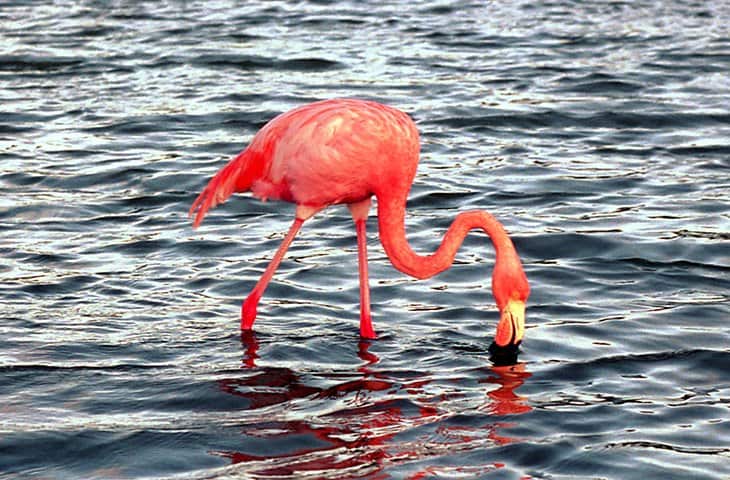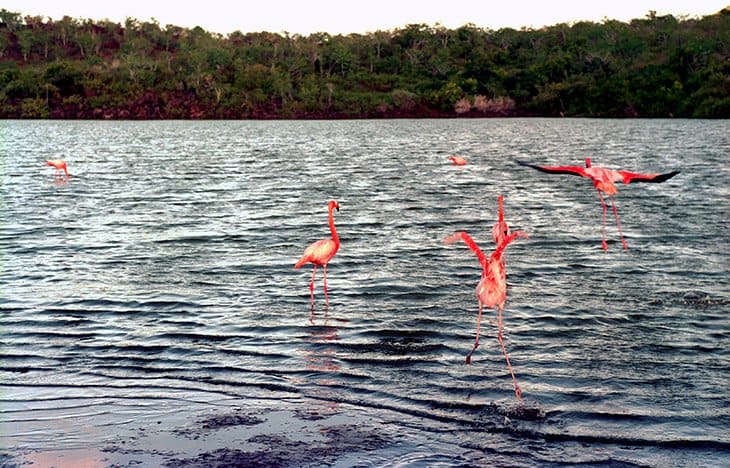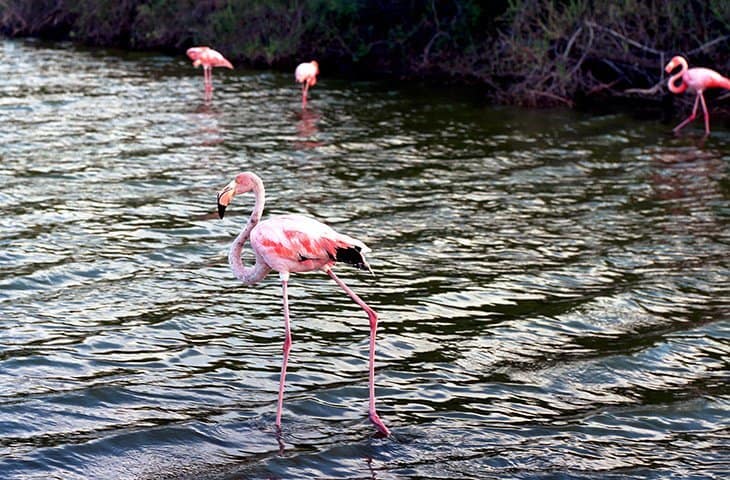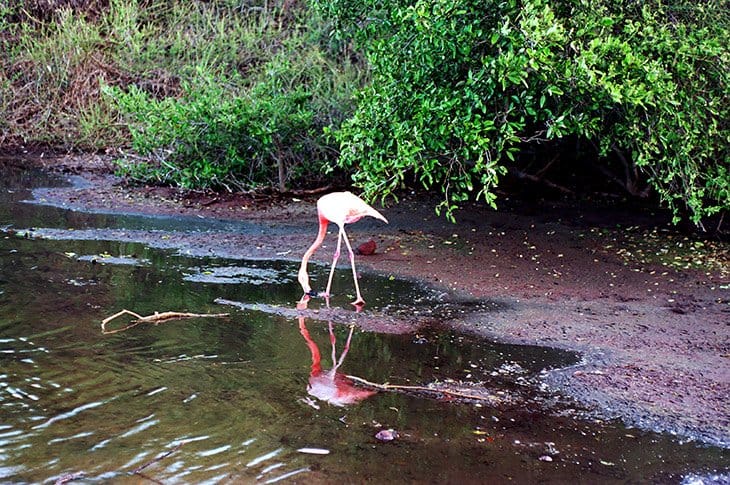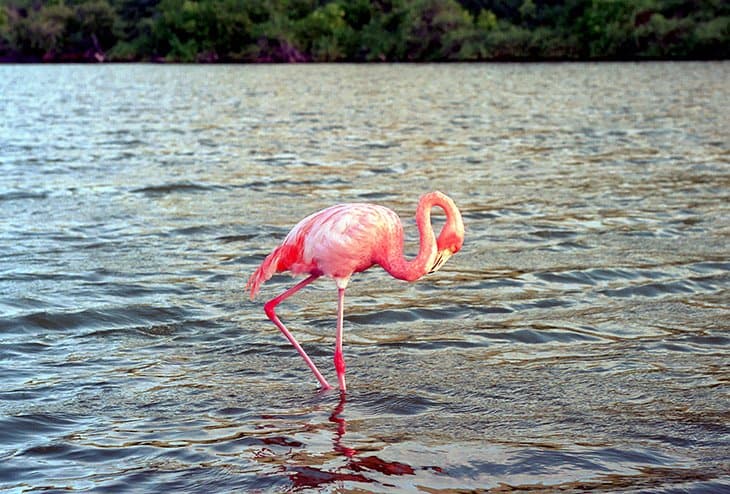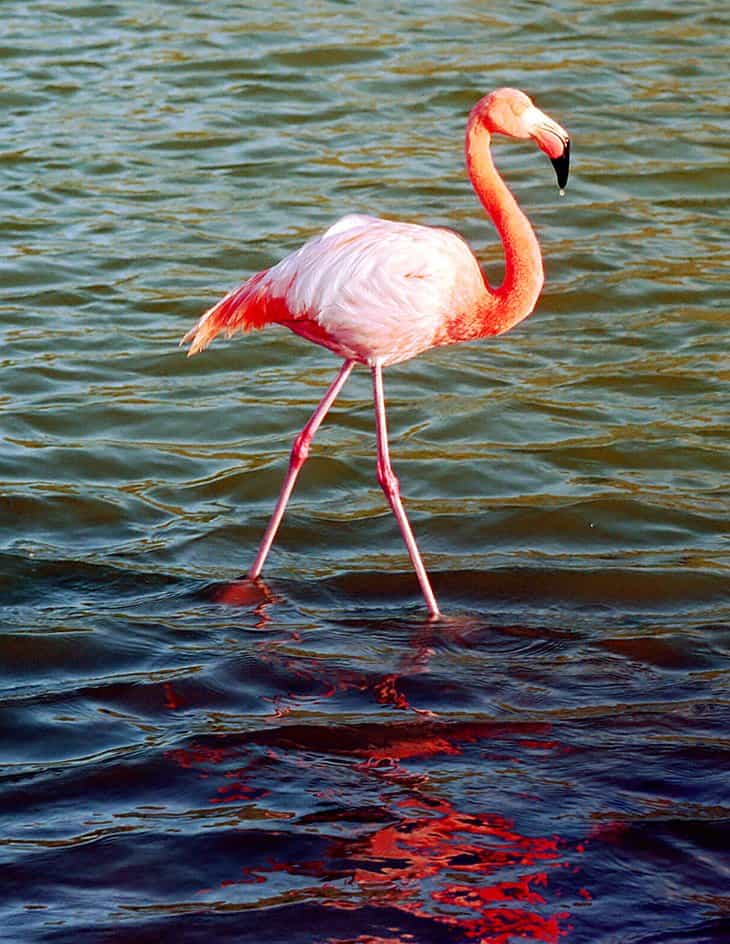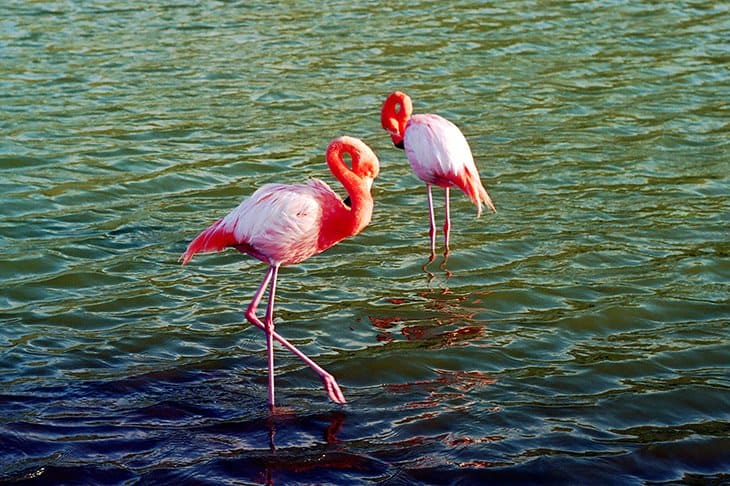Galapagos – Flamingos
The family of the flamingos includes 5 kinds. It is very different from their probably next relatives, the waders and the duckbills. With the waders, the flamingos connects the whole external appearance with the long neck (19 cervical vertebra!) And the overlong legs. In all flamingos the 3 front toes are connected with webbed skins, the short 4th toe points to the back. Other anatomical features are reminiscent of storks.
The flamingos live on small crabs, snails, worms and insect larvae. By trampling with the feet, flamingos sometimes whirl up the nutrient-rich bottom mud, which can contain up to 91% organic matter. Flamingos are extremely sensitive to disturbances on the nesting site, and fluctuations in the salt content also affect the brood process, so that in some years certain colonies do not even go to oviposition.
Unique is the type of food intake: Flamingos are fully adapted to foraging in lagoons and very salt lakes (including mountain lakes of the Andes to 4000 m altitude). Flamingos stand in the shallow water and with their crooked beak, which is provided on the sides with lamellae and works like a sieve, small animals out.
For reproduction, the flamingos build a nest, which consists of a 30-40 cm high mud mound in the shallow shore water, which has an upper diameter of 25-40 cm (50-60 cm at the base) and carries a flat trough at the top, in the without further padding the only white egg is laid. It is rare to find two eggs in a nest. Shortly before oviposition the building activity increases strongly, before only little is visible from the nest. Even after oviposition, both adult birds increase the building for a while. When drying out, the birds compress the material by seizing. The female takes over the main part of the entire construction activity.
Both parents breed for 28-32 days, with the flamingo sitting on the nest, with its heel joints protruding far behind, a peculiar sight. The young birds have a short, dense Dunenkleid (slightly gray on the top, down lighter white), which is replaced after 4 weeks by a dark gray youth dress. Initially, the legs and beak are still red, after a few days already they are blue-gray to black. Also, the beak is straight first, only after about 2 weeks, he begins to bend.

